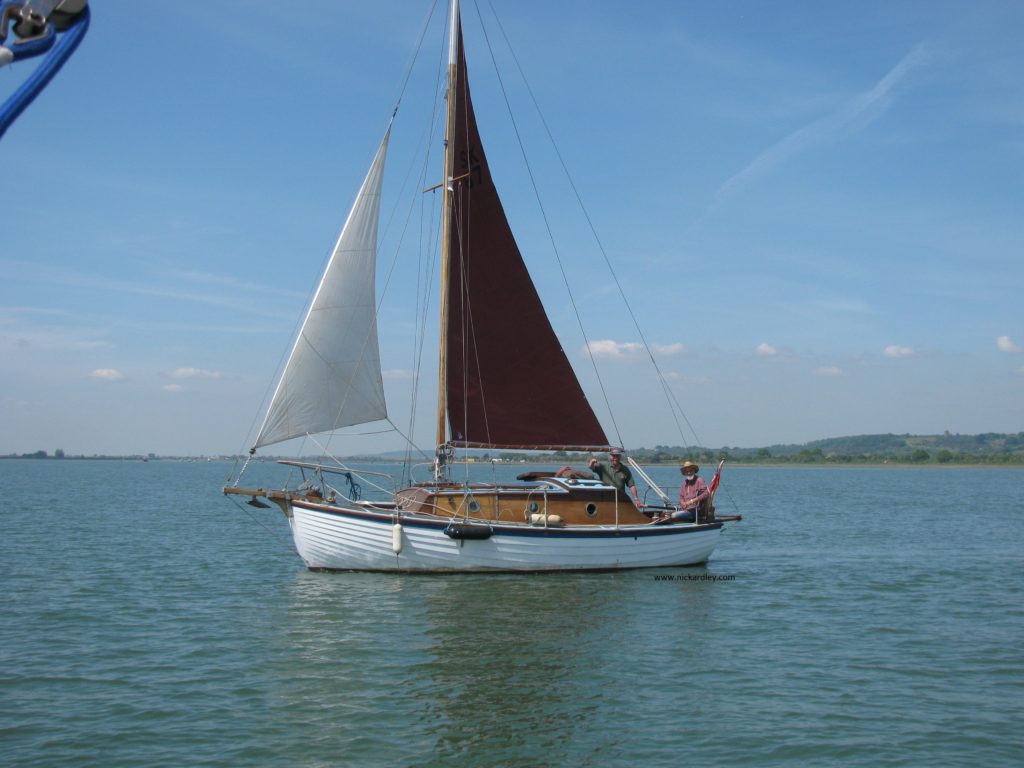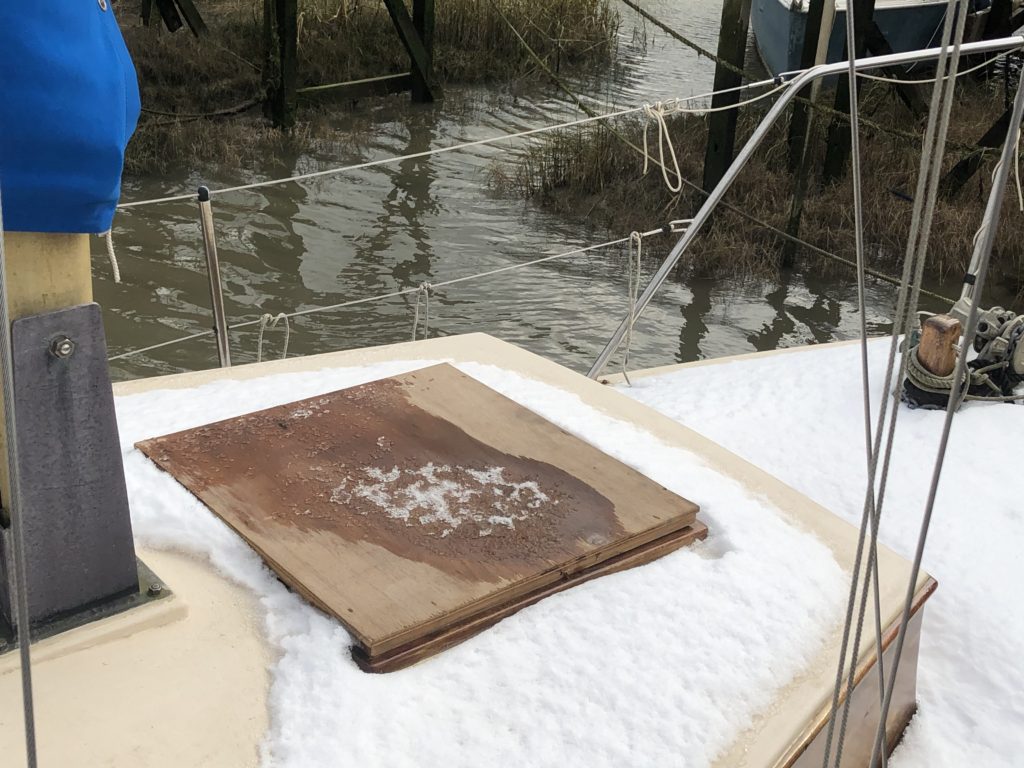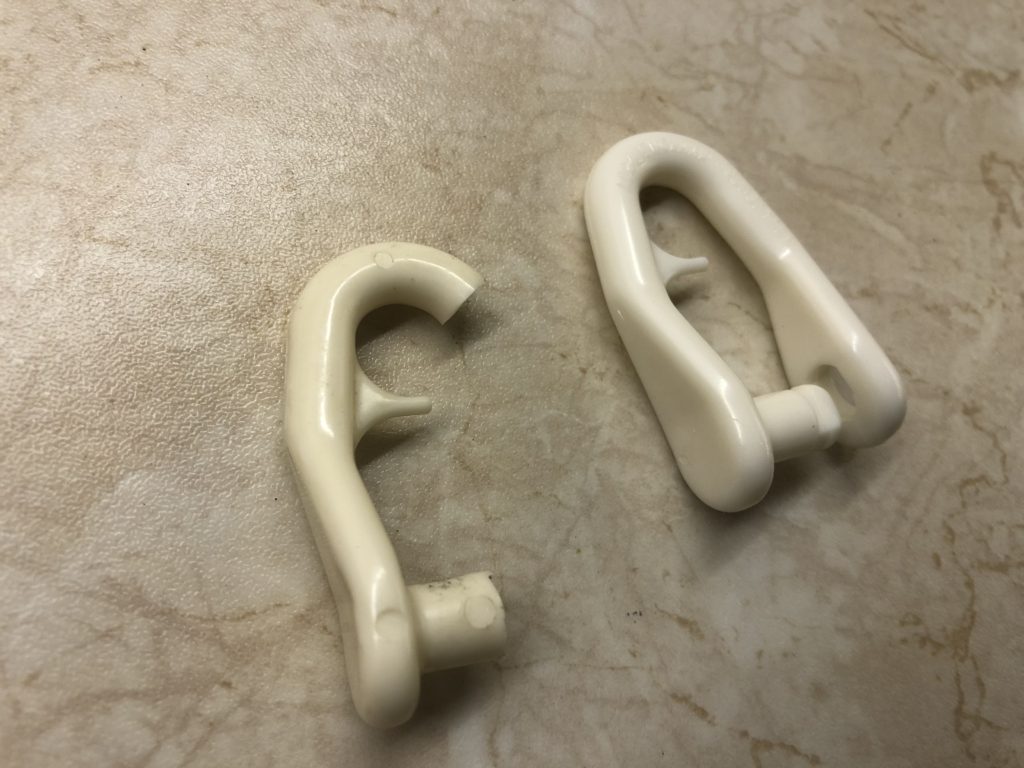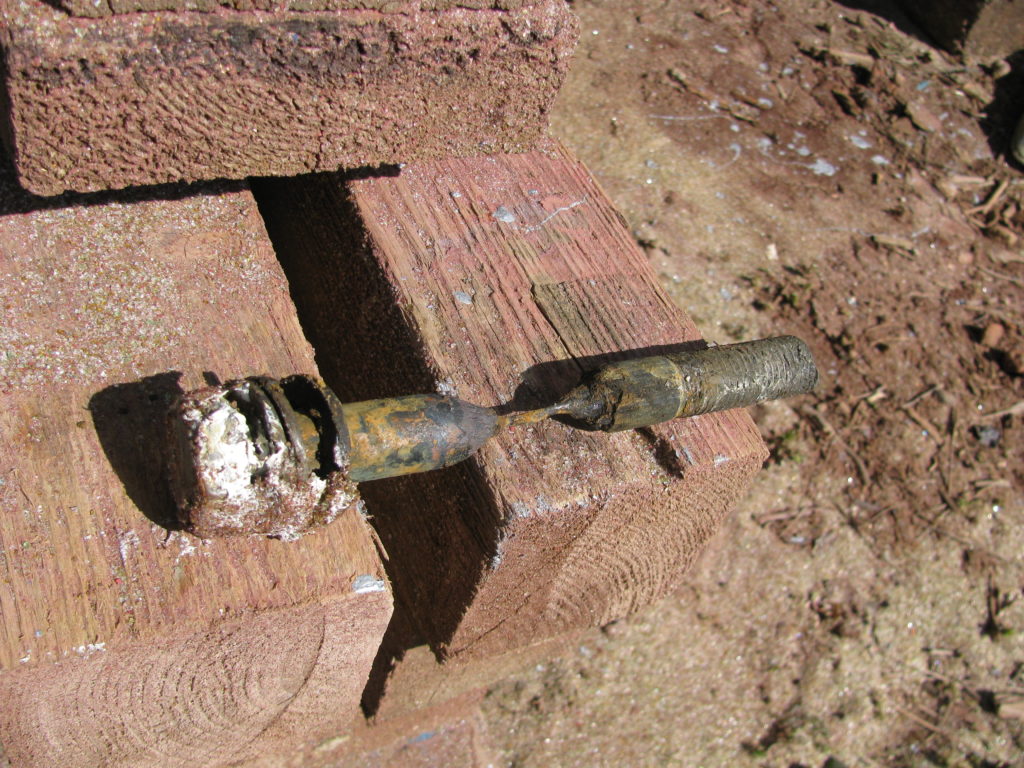Ditch-crawler makes a lady very happy…
During the summer of 2019 whilst berthed in Titchmarsh Marina, I did what I have done for many years and walked the yard looking at the craft. Some newer craft have an appeal and some of the older boats certainly, but it is usually the ‘graveyard’ that interests me most!
A ‘graveyard’ section can be found in many boatyards, up and down the coast. Inland ones too.
See: http://nickardley.com/ditch-crawler-ruminates-on-boats-found-at-deaths-door/
I have been witnessing the gradual demise of many craft here, as have the yard operators, over time.

It is sad, but almost natural too, for there was a time when old craft were either laid to rest to rot in the saltings, broken up or burnt. Thames barges were often left to rot in a lonely creek.

The lady, Sarah Spinks, sent me a picture of her dad’s boat sailing. Note the relatively short mast for a boat with a hull almost 24′ in length. It was a common feature.

The owner of this boat sailed her on the Norfolk Broads for may years, with his family as crew. The family were ‘forced’ to sell the boat when the ‘old boy’ a husband and father, became ill. Following that sale, she seems to have passed through a couple of ownerships and was latterly based at Titchmarsh Marina from around 2012.
Sarah tells me that she is planning to acquire the vessel and renovate her. She is desperately trying to trace the current owner with the help of Titchmarsh Marina, where the boat has sat out of the water for several years.

Sometimes, owners of these boats ‘go to ground’ and it then becomes difficult or impossible to find them. Bills must have been paid … yards do not keep boats for the sake of it. But, and this is a big but, as came out in a sinking event at a marina in Brixham recently, the custody of an abandoned boat is dubious. In a harbour it becomes the harbour’s responsibility, but does not mean becomes legal owner. At a yard, a lien is often the only recourse, and is the way yacht and sailing clubs deal with the situation in a legal manner.
Apparently, if you destroy an old boat, the owner who has or had legal title may have recourse to compensation. It’s tricky!
As I write, the legal owner of Alcyone is still to be contacted.
Recently, an article appeared from the Eastern Daily Press, written by reporter Daniel Hickey:
https://www.edp24.co.uk/news/norfolk-woman-search-sea-king-boat-titchmarsh-marina-7824306
This was also followed up with a fundraising page, raised by Sarah:
I have added a series of three further pictures of the Alcyone as seen in August 2019. Two years of being open to the elements has passed since these were taken, so her condition may well have suffered further.


My advice would be for a thorough assessment be made of the vessel’s condition by a competent person. A list of priorities and other work requirements are needed with worst case ballpark costs.

It may be that the hull is in relatively good condition. The stem can be repaired, but there are many unanswerable questions floating in even my mind, to give an honest assessment.
Below are a series of three pictures showing the deterioration that has taken place over the last two seasons (nearly)sent by my good sailing friend Ian Clarke, owner of MG’s old bawley yacht Storm. Thanks Ian.



Although, I made a lady very happy, I would seriously urge her caution for the project could become a disaster, financially. That said, throw money at a boat and anything can be done.
Boats though are not a matter for the heart alone and far too many people have learnt that the hard way…
We all have to say ‘farewell, friend, mistress…’ to our beloved craft at sometime, and I know I too will face that dilemma one day…
To follow the adventure, see: https://www.facebook.com/AlcyonetheSeaking

























































